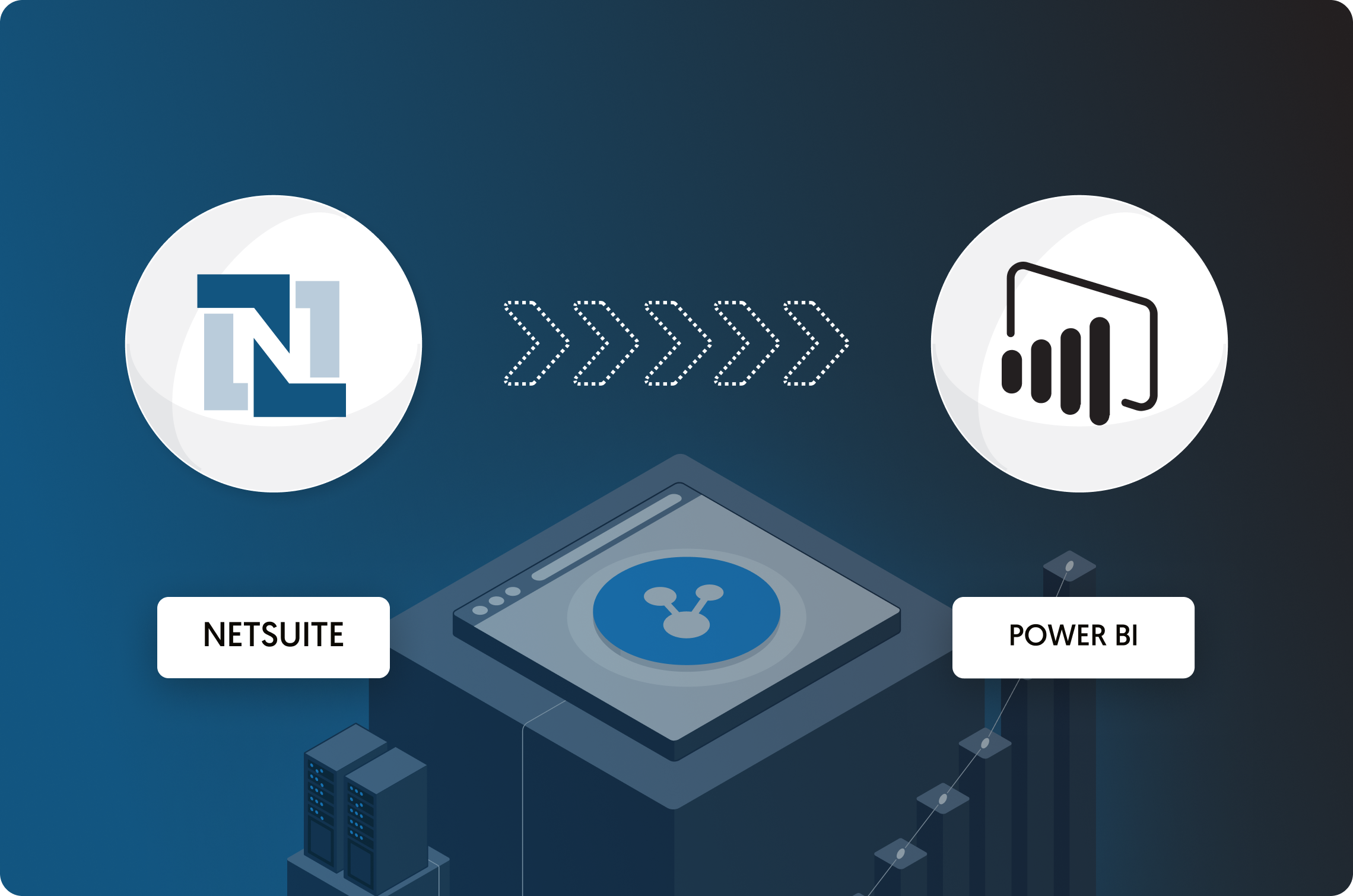If your business uses Oracle NetSuite for enterprise resource planning (ERP), chances are you’ll need to visualize the data from it in Power BI to derive valuable insights.
But, since there's no native integration between the two tools, the methods for connecting them may not be obvious. In this article, we will explore 2 methods for connecting NetSuite to Power BI: via open database connectivity (ODBC) vs. Dataddo.
Click to skip down.
- The technical solution: ODBC (*Note: this method requires a purchase)
- The non-technical solution: Dataddo (*Note: this method does not require a purchase)
- Why use Dataddo to connect NetSuite to Power BI?
- Additional Power BI tips, tricks, and resources
Connecting NetSuite to Power BI via ODBC
One way to sync data from NetSuite to Power BI is via open database connectivity (ODBC). This method is for the more technically-minded.
Follow the steps below to make a NetSuite and Power BI connection via ODBC:
- If you haven’t already done so, purchase the SuiteAnalytics Connect functionality in your NetSuite.
- Download and install the ODBC driver from SuiteAnalytics.
- Configure the ODBC data source in the ODBC administrator tool using the configuration values available on the SuiteAnalytics Connect Driver Download page.
- After setting up ODBC for NetSuite, you can use it to import data into Power BI. Open your Power BI Desktop application.
- Click Get data from another source on the homepage or Get data on the menu ribbon

- From the list of services, select ODBC and click Connect.

- In the window that pops up, choose the Data Source Name (DSN) you have configured for the NetSuite ODBC connection and click OK to proceed.

- Provide your NetSuite credentials (account ID, email address, and password) and click Connect.
- Once connected, you’ll see a list of tables in your NetSuite account. Choose the table(s) you want to import to Power BI and click Load.
Now, you should have your desired NetSuite data ready to visualize in Power BI.
Important: This is a one-off connection between NetSuite and Power BI. To schedule automated data refresh, you will need Power BI Pro and an on-premises data gateway. When configuring the data gateway, you can choose to refresh data via the ODBC connection.
Connecting NetSuite to Power BI using Dataddo
Now let’s look at the alternative: using Dataddo to create the connection. Dataddo is a no-code data integration platform with a massive library of connectors, including for NetSuite and Power BI.
These connectors make it easy to create a reliable, automated connection between the two tools, so that your NetSuite data will continuously be refreshed in Power BI.
Just follow these simple steps:
- In your Dataddo account, click the Flows tab and continue by clicking on Create Flow. If you don't have an account yet, sign up. It's free!

- Click Connect your Data on the left and click on Create New Source to select NetSuite from the list of available services.

- On the screen that appears, click Authorize Account and enter the credentials for your NetSuite account to proceed. If you need help, refer to our documentation.

- Select the table(s) you want to import from NetSuite and finish your data source configuration.
- Next, click Connect your Data Destination and select PowerBI from the list of services.

- Finish by clicking Create Flow. Follow the instructions on the popup to configure your Power BI. If you need help, refer to our documentation.
It's that easy. Moreover, we proactively monitor all the connections built with our platform, so you can rest assured that your dashboards won't suddenly break.
Now, you can focus on analyzing your critical ERP data in Power BI!
Why Use Dataddo to Connect Netsuite to Power BI?
Using Dataddo to connect NetSuite to Power BI is the better option for various reasons, including but not limited to:
Smooth Integration
Thanks to pre-built connectors for NetSuite, Power BI, as well as hundreds of other tools, using Dataddo to integrate the two services is much easier and smoother than doing it via ODBC.
Start for Free
Dataddo offers a full, 14-day trial, as well as a time-unrestricted free plan. Yes—under the free plan, you can sync NetSuite data to Power BI weekly (more frequent syncs require an upgrade).
Syncs Up to Every 5 Minutes
With Dataddo, you can choose how often the data in your Power BI dashboard updates—from monthly to every 5 minutes.
Full Overview of All Connections
Thanks to Dataddo's central management screen, you'll always know what services are connected to what other services, how often the data between them syncs, and much more.
Inbuilt Data Quality Tools
Dataddo automatically applies format harmonization to all the data it syncs; this ensures that your data will always be analytics-ready. Our Data Quality Watcher tool enables granular monitoring of any data connections. And you can even blend datasets directly in Dataddo.
|
Connect All Your Data with Dataddo Just a few quick steps to get your data to Power BI. |
Additional Power BI Tips, Tricks, and Resources
Continue reading the Dataddo blog for more Power BI tips, tricks, and resources!
- Smarter Financial Dashboards for SMEs (with Free Power BI Template)
- Overcome Data Blending Limitations of Tableau, Looker, Power BI
- Mastering DAX Functions in Power BI
- Guide To M Code in Power BI: A Power Query Formula Language
- How to Connect Google Sheets with Power BI: Direct vs. Dataddo
- How to Connect Stripe to Power BI: Direct vs. Dataddo
- How to Connect Sage Accounting to Power BI for FREE: Direct vs. Dataddo
- How to Connect Google Analytics to Power BI for FREE: Direct vs. Dataddo
- How to connect JSON with Power BI: Direct vs. Dataddo
- How to Connect SEMrush to Power BI for FREE
- How to Connect Xero to Power BI With Dataddo for Free
- How to Integrate Exact Online Data with Power BI (or any BI Tool)




Comments